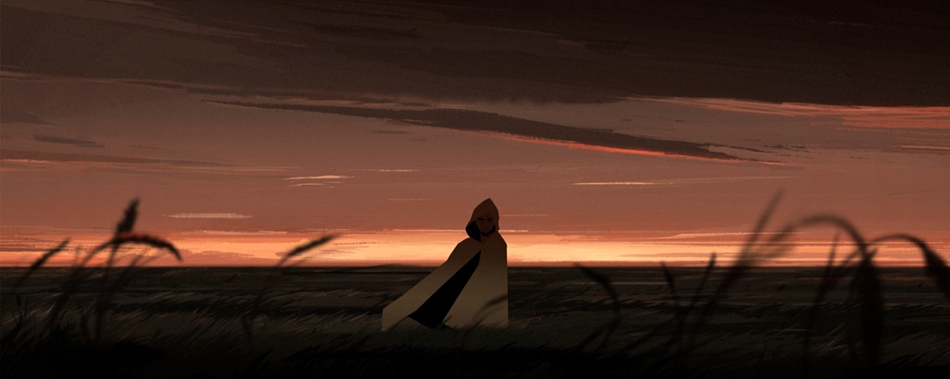
Whilst it’s true that there’s a certain amount of satisfaction to be had from watching a film that delivers a conclusion in which questions are answered and situations resolve, not all stories need to wrap their threads up in a neat bow to be effective. It’s arguably harder to pull off a narrative in which the journey, as opposed to the ultimate destination, brings a sense of satisfaction and leaves an audience sated. Manddy Wyckens’ traversing animation The Longest Road is a film in which the importance lies in “Leaving what we have to find out what we left behind.” We asked Wyckens (who we last saw revelling in the endless possibilities of a tank full of gas and someone to ride shotgun in The Night We Were Kings to tell us why travelling is sometimes better than arriving.
“This film is kind of a huge tribute to Hans Bacher’s work which I discovered when I was interning at Disney animation studio. There was especially one painting hanging in the corridors that caught my attention and I got very obsessed with the idea of doing compositions in which even the smallest silhouette would read. Also, on a personal note, I have a huge fondness of Terrence Malick’s movies (I watched ‘Badlands‘ lots of times the summer I began thinking about the film) and I really enjoy road-trip/self-discovery movies. So all of that got together and I decided to put it all in a movie. The result seems very “heroic fantasy” oriented, though the prince and kingdom is just a big metaphor (it’s not a literal story, it may very well not be a prince or a kingdom or a crown, it was just convenient, “tale-like”) for what traveling brings to one person. It’s a bit like an Odysseus coming back to Ithaque kind of story: things you left behind don’t stay the same and you can’t expect to find them in the same state you left them in.
So I left Gobelins in January and I had all of these initial ideas in mind and began working when installed in my Cube at CalArts. The production took until June and I finished the film in a rush two weeks after I got back to Paris. The animation was all done in Photoshop, with compositing in After Effects. My preproduction sketches and storyboards were made on post it notes with markers, before I switched on the Cintiq available at CalArts to actually make the film.”


